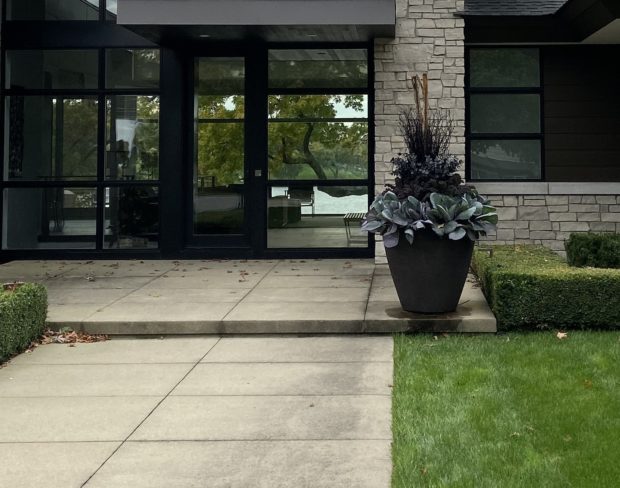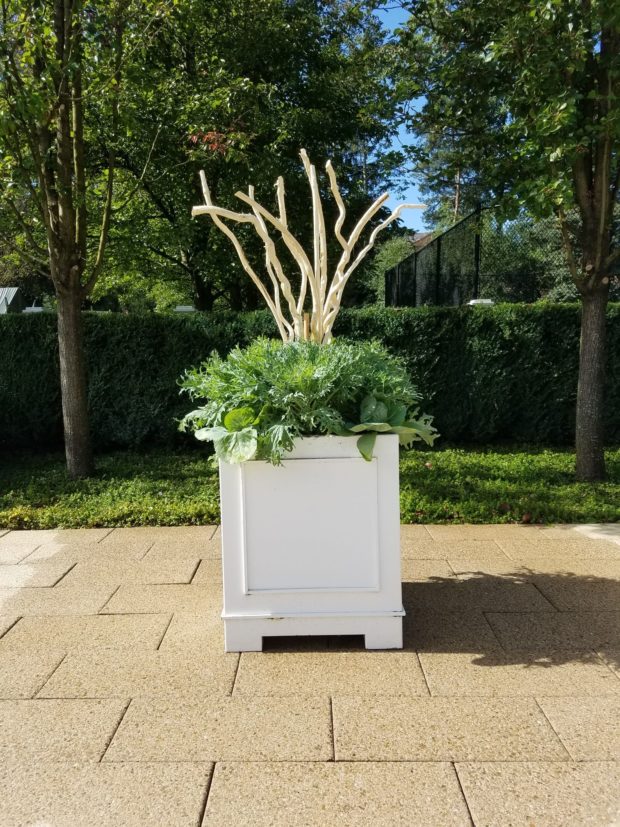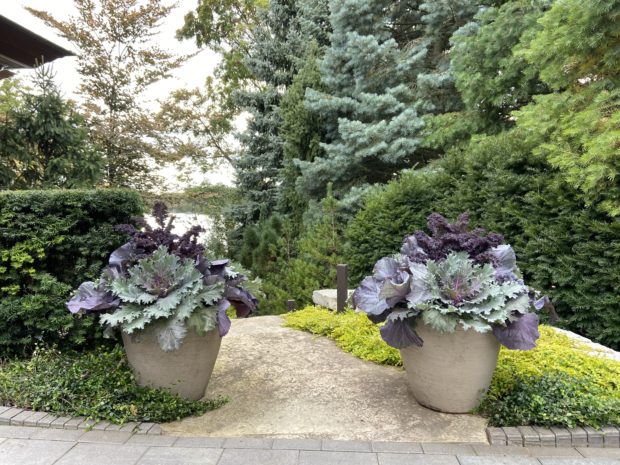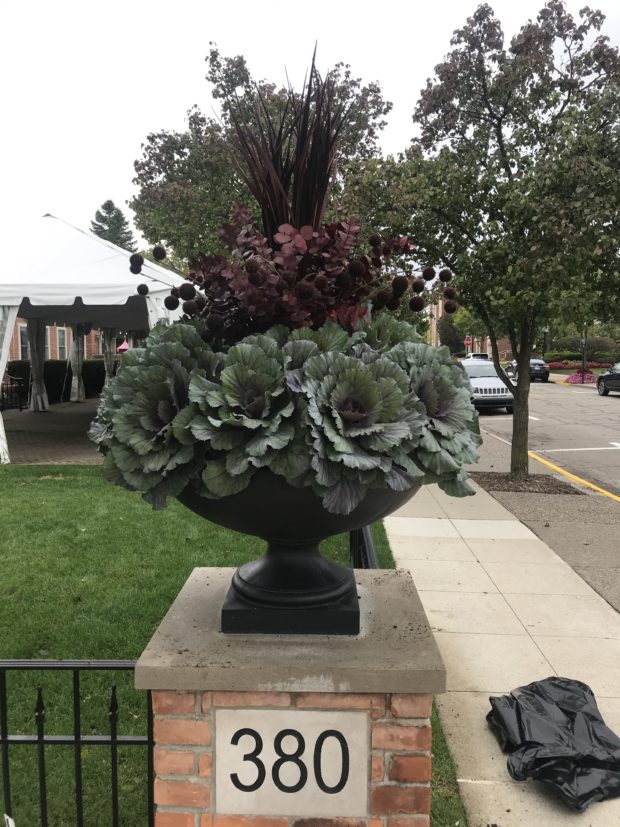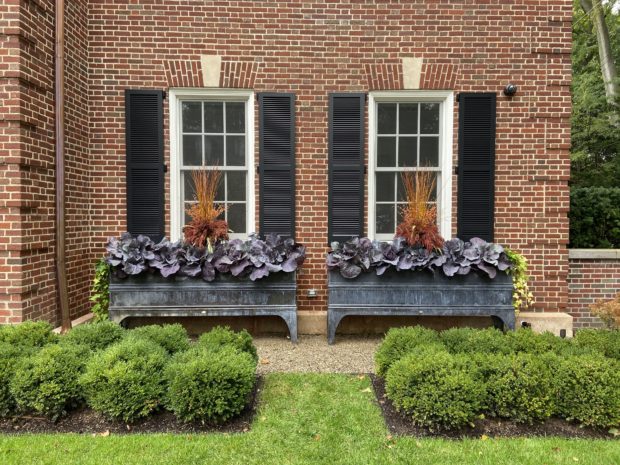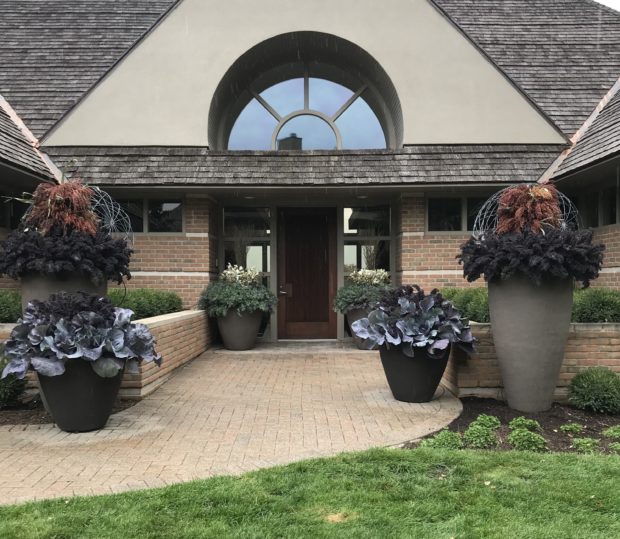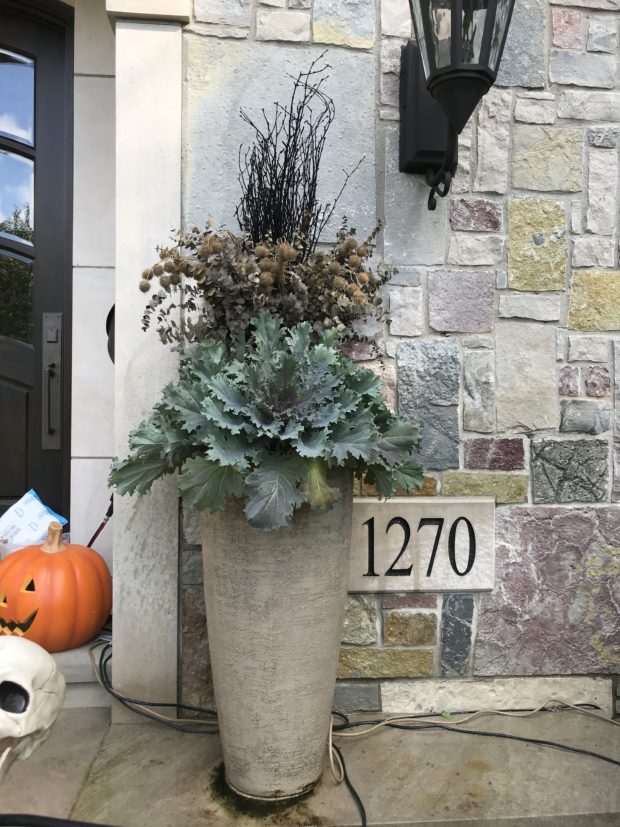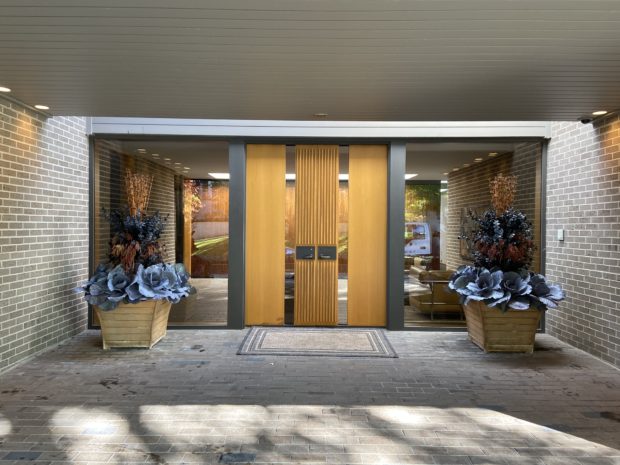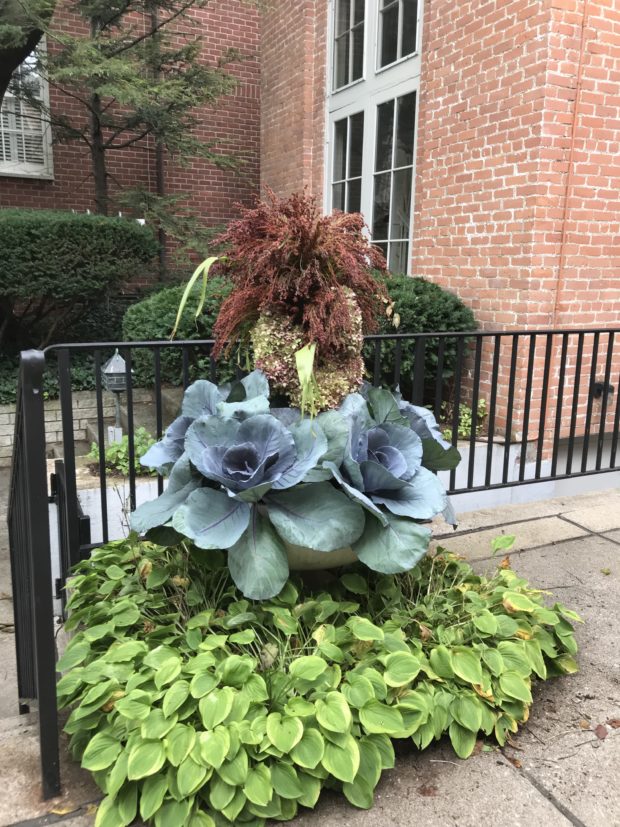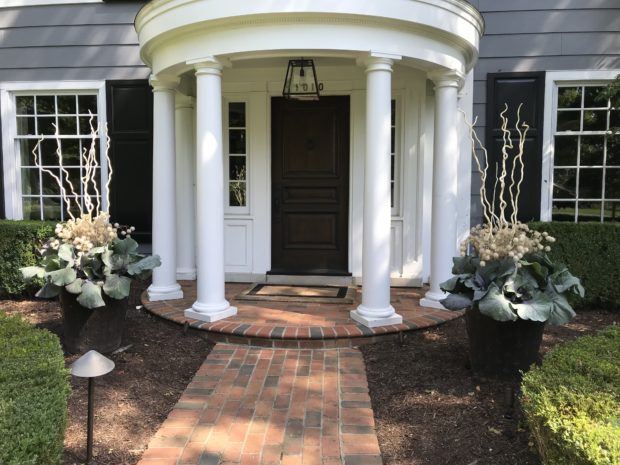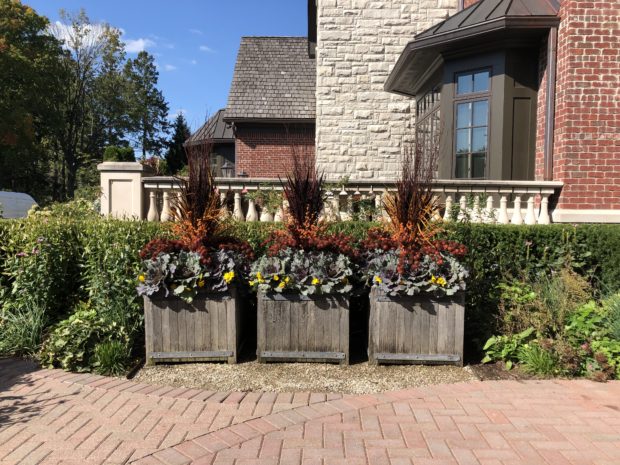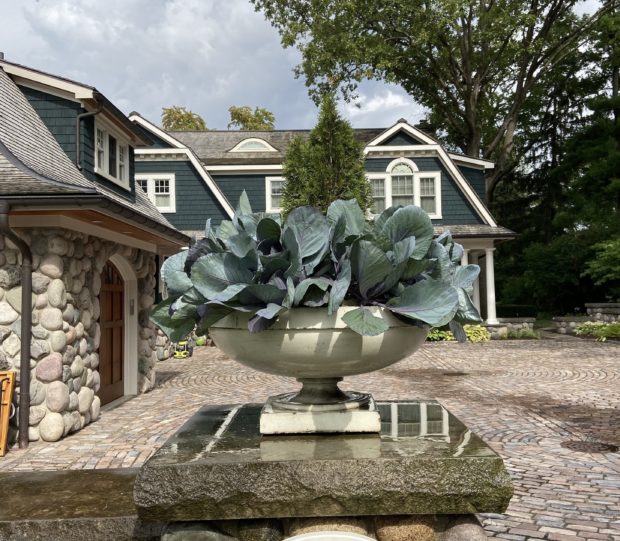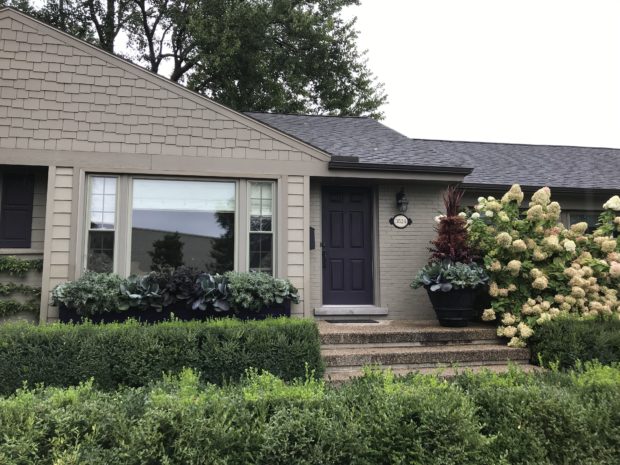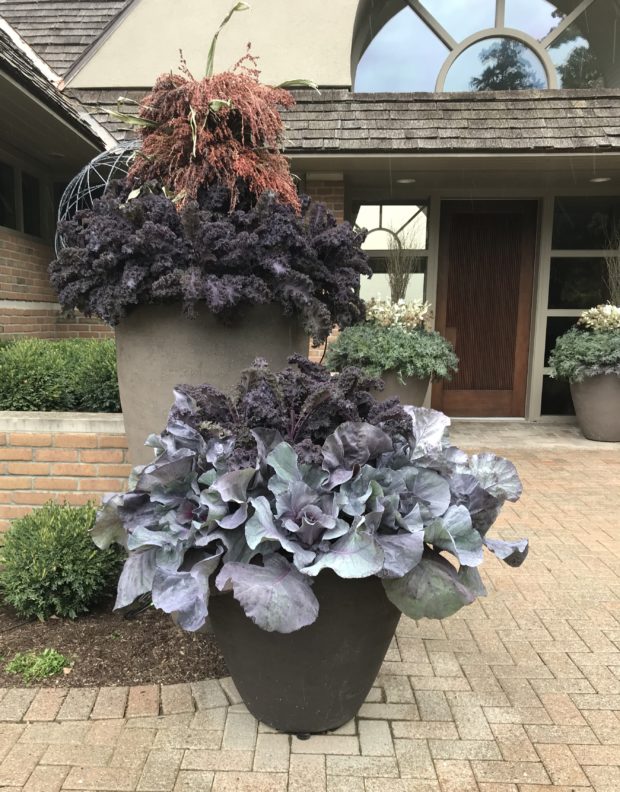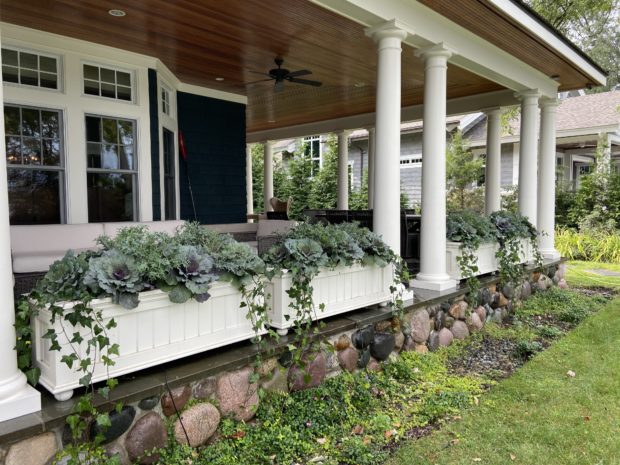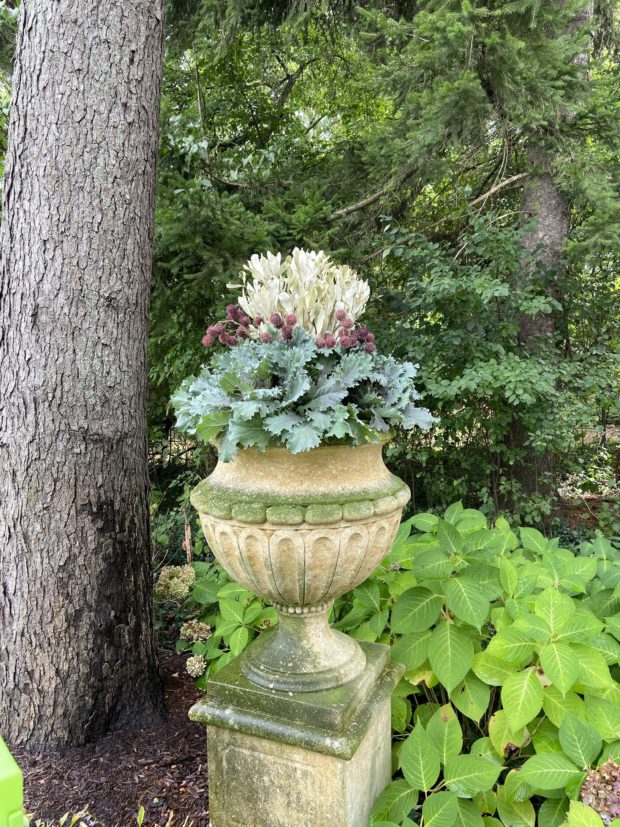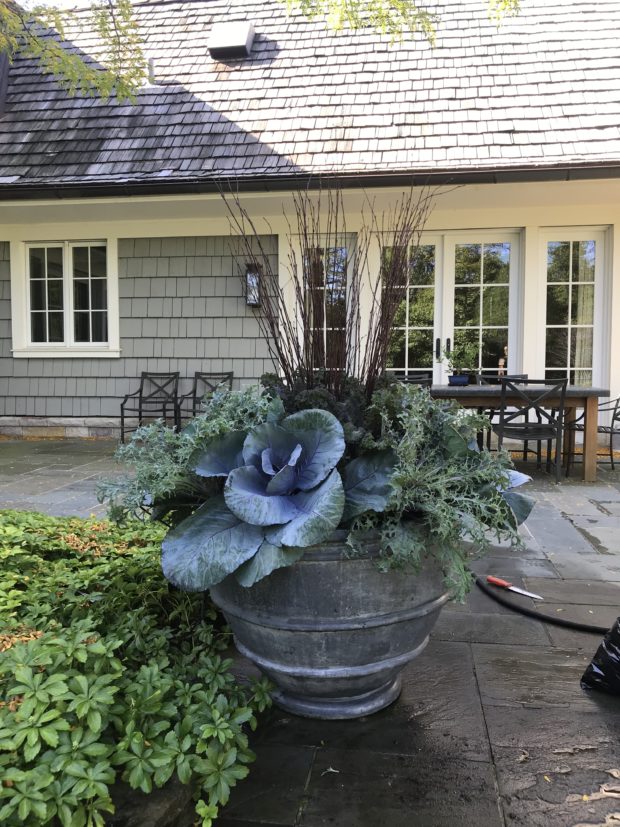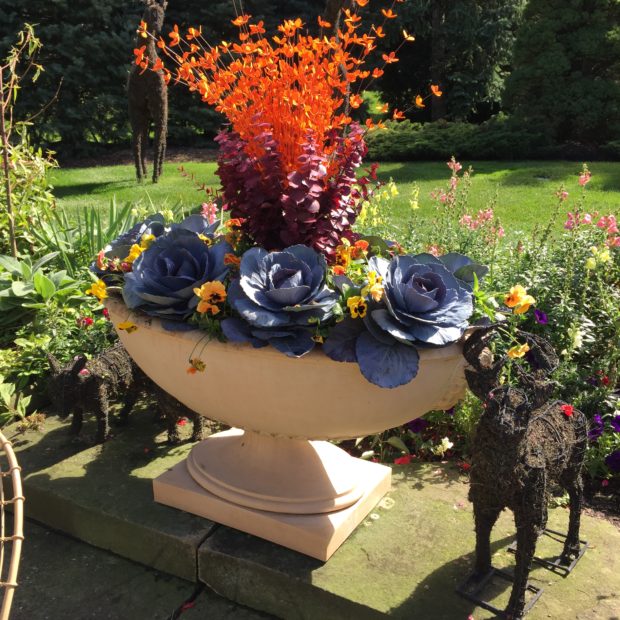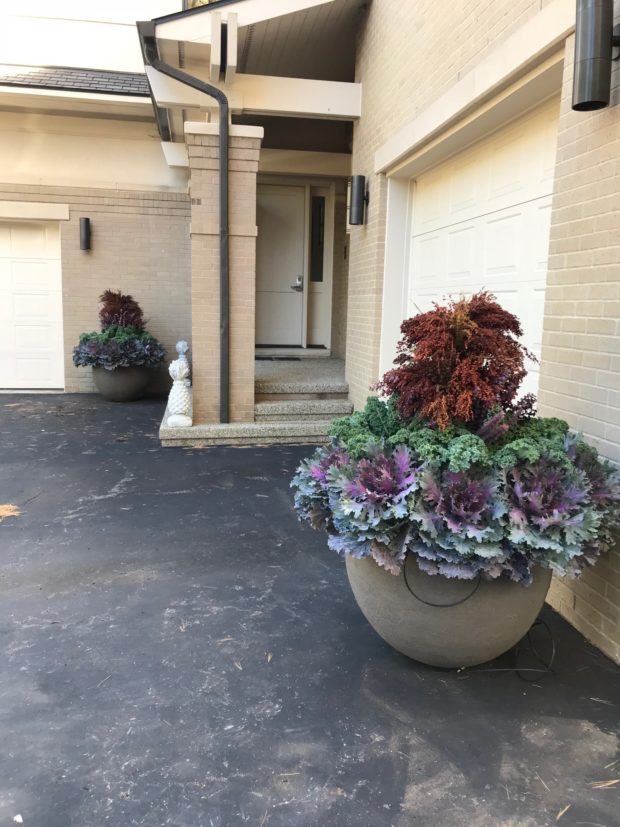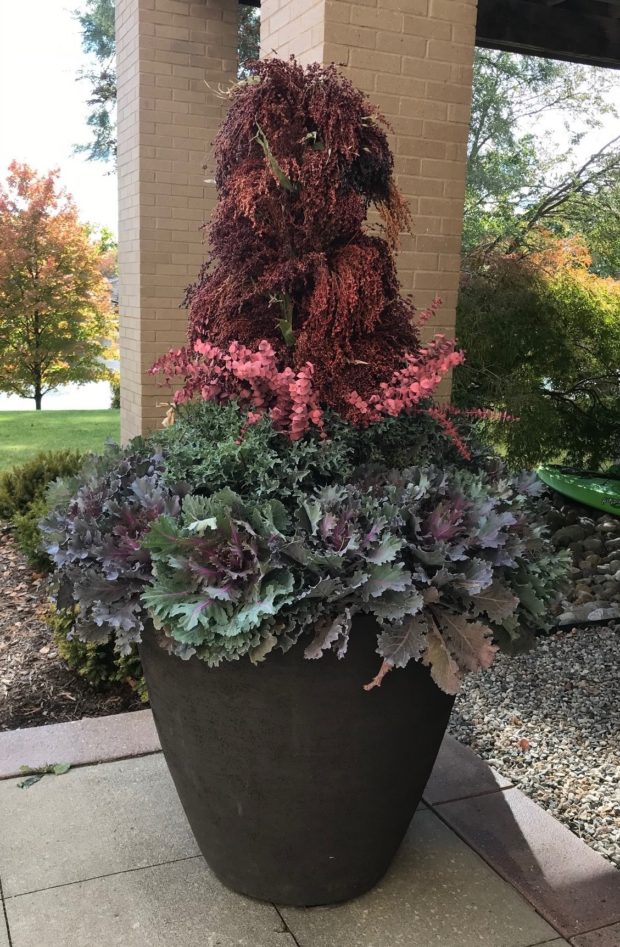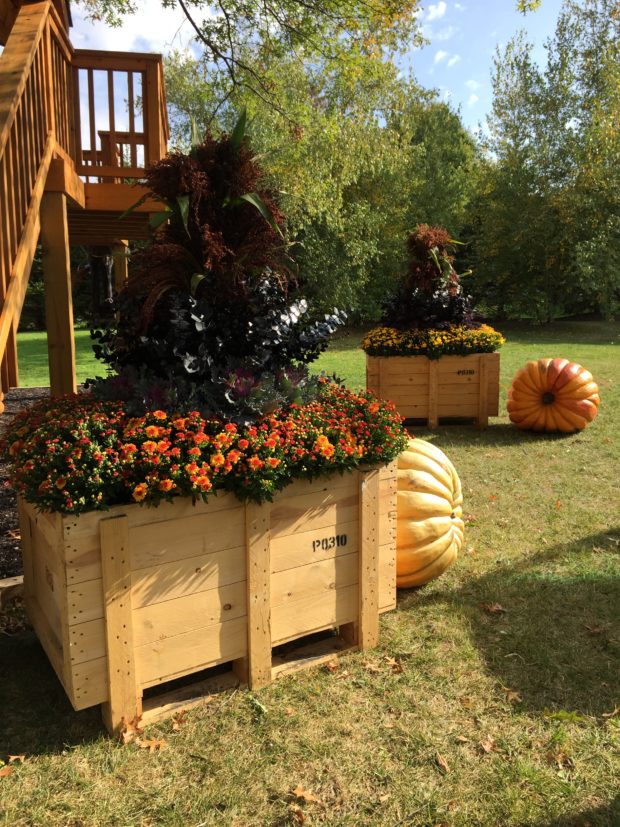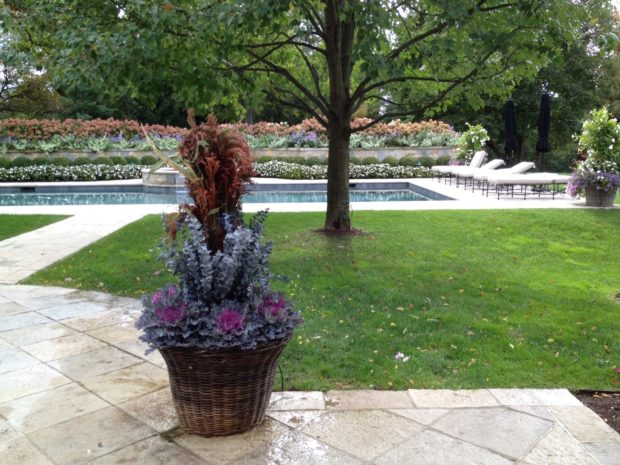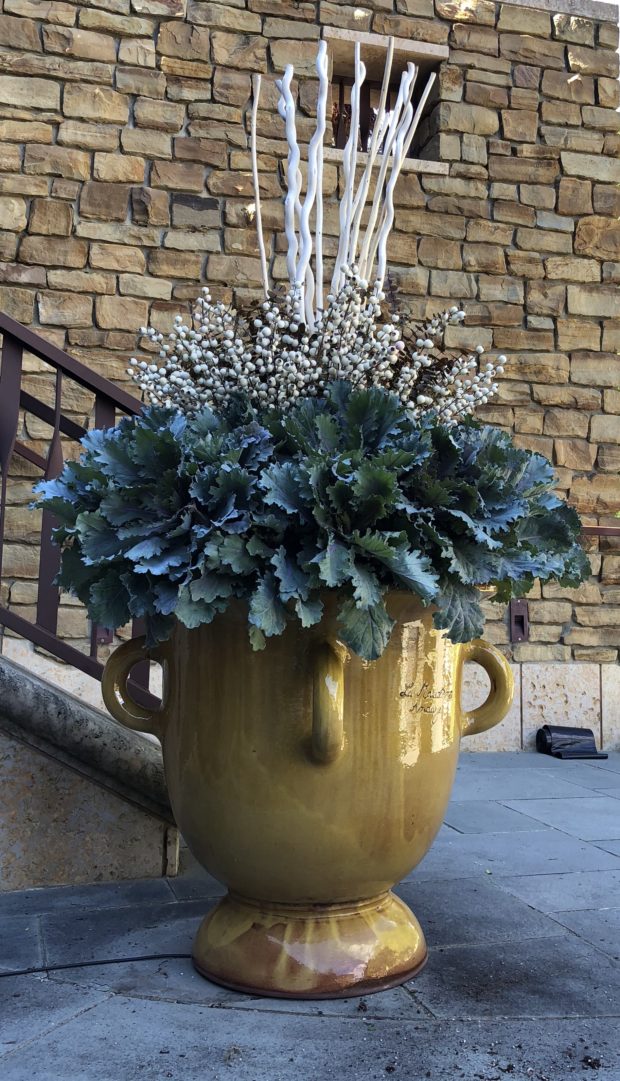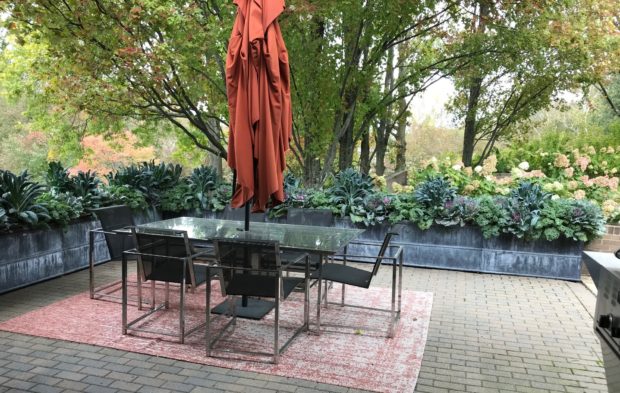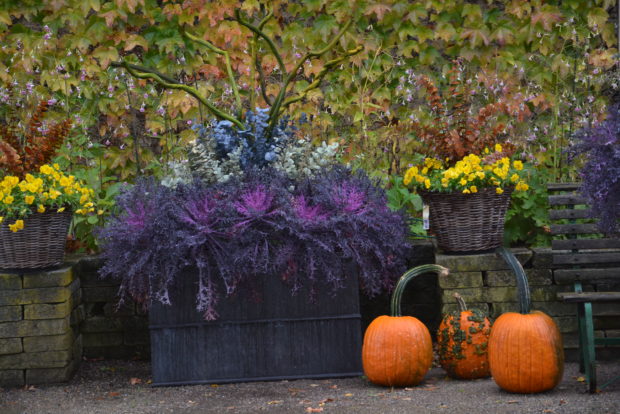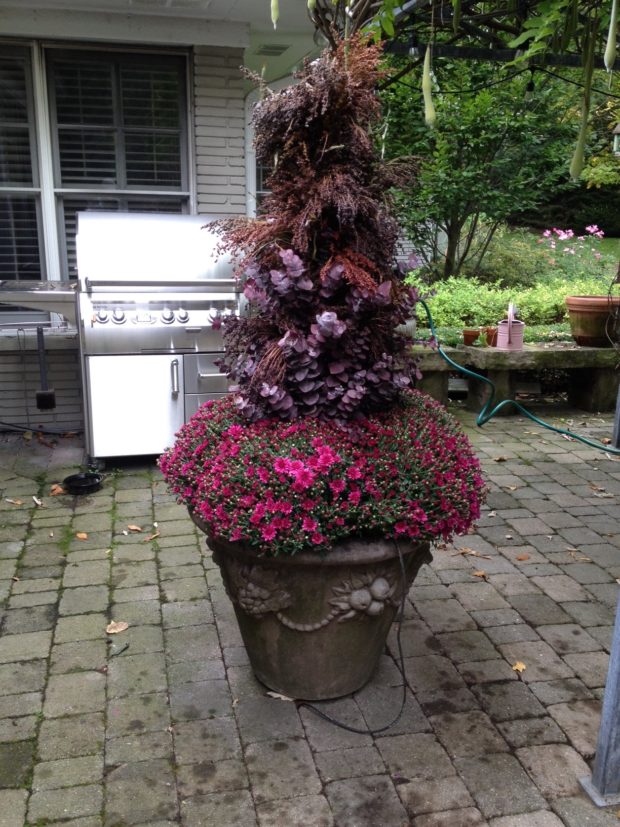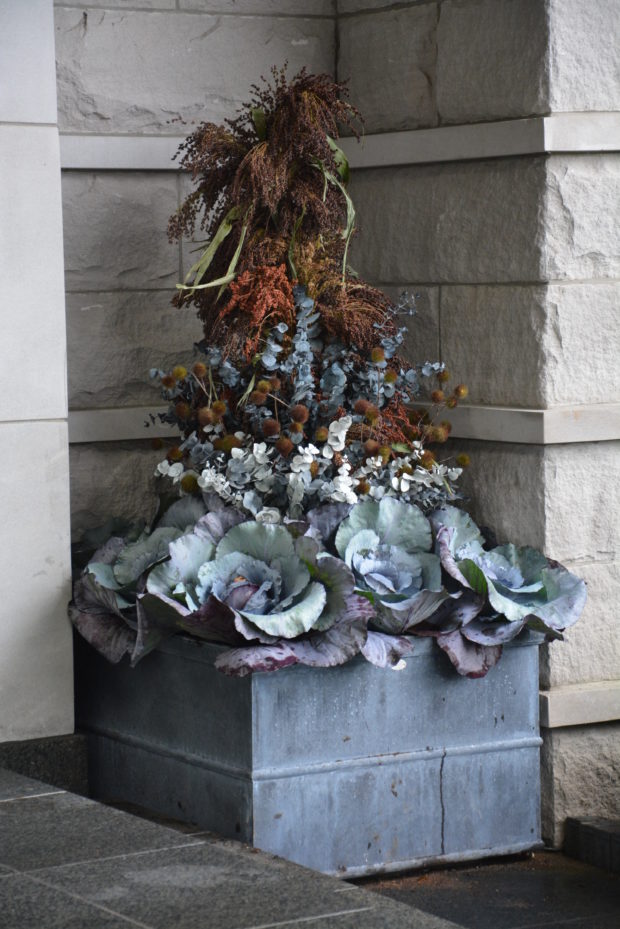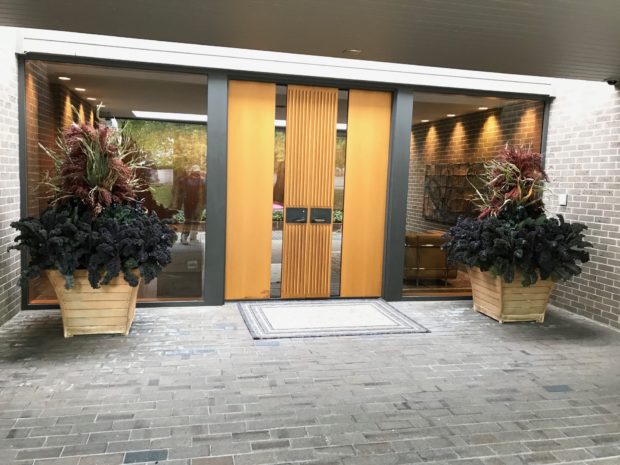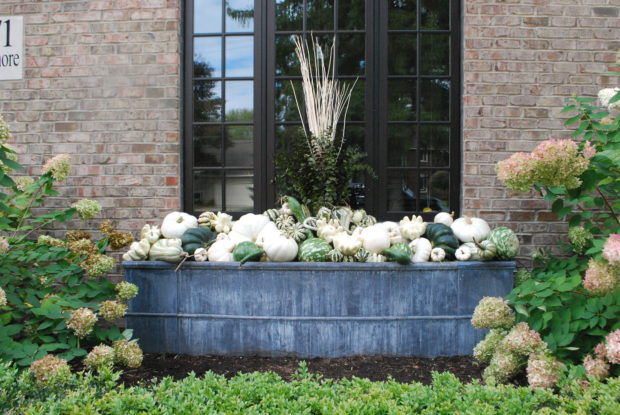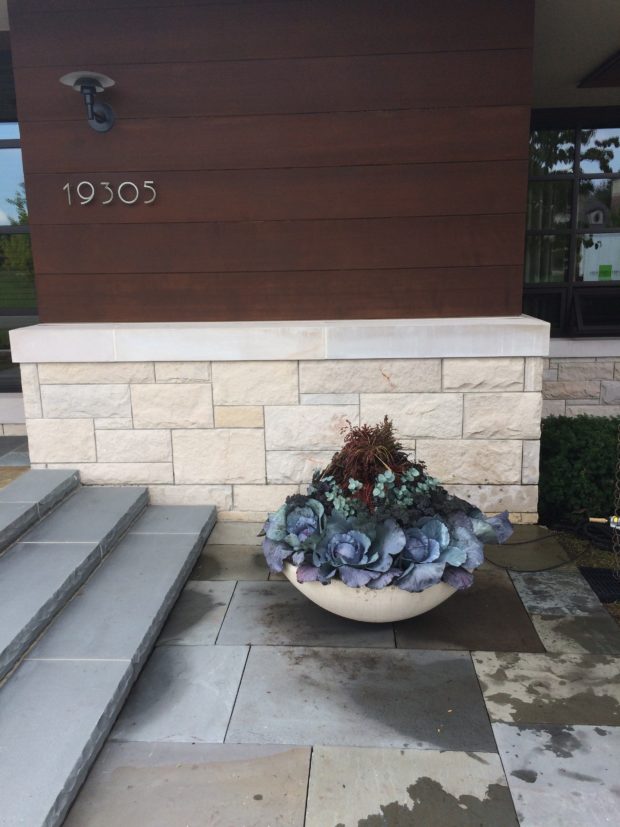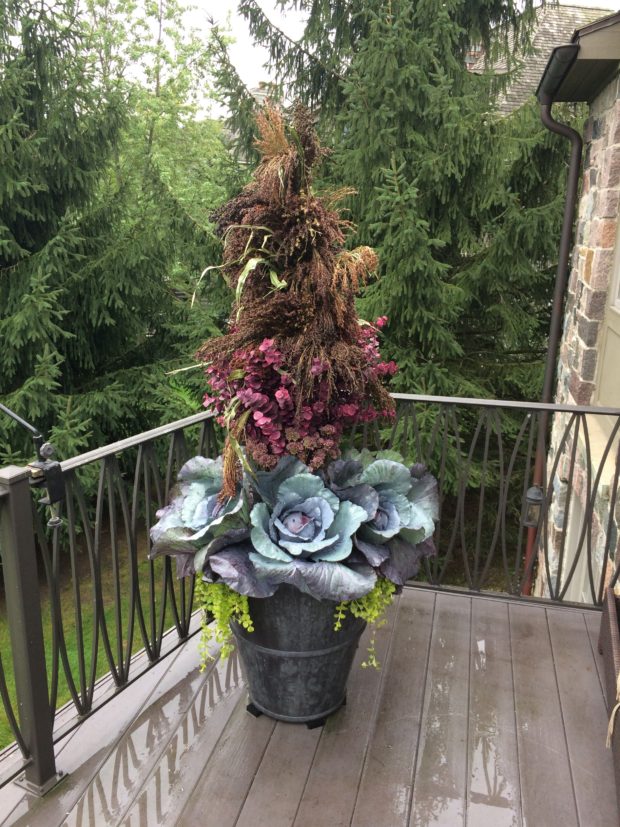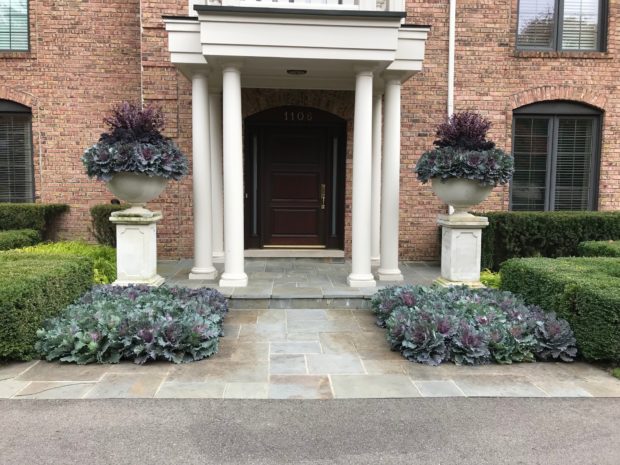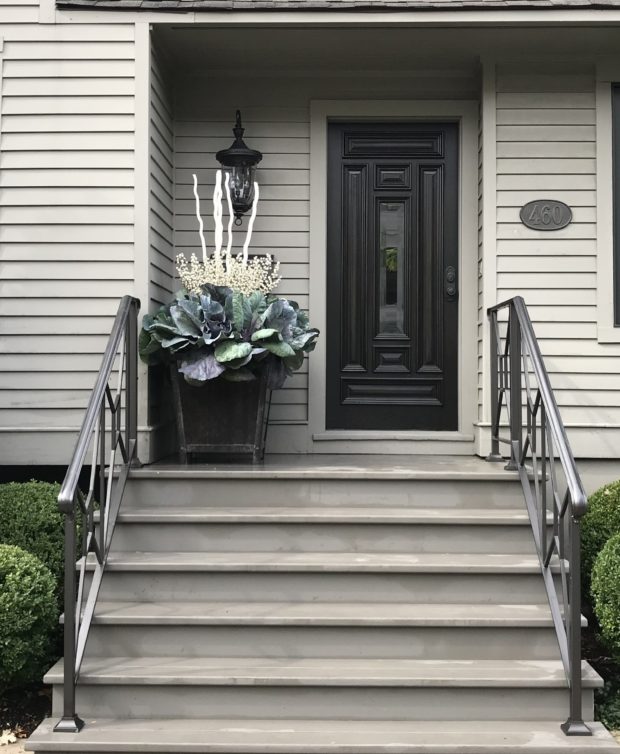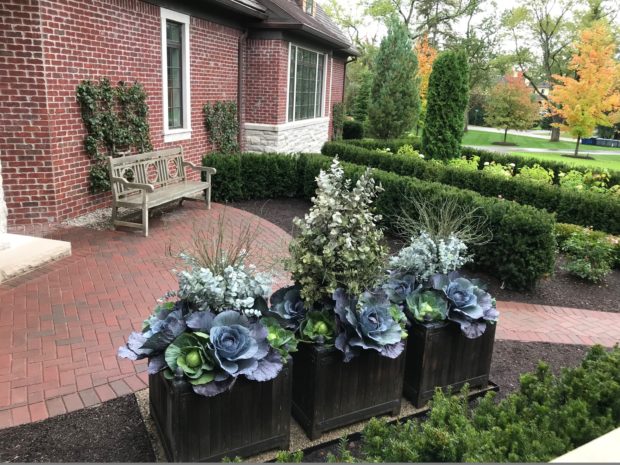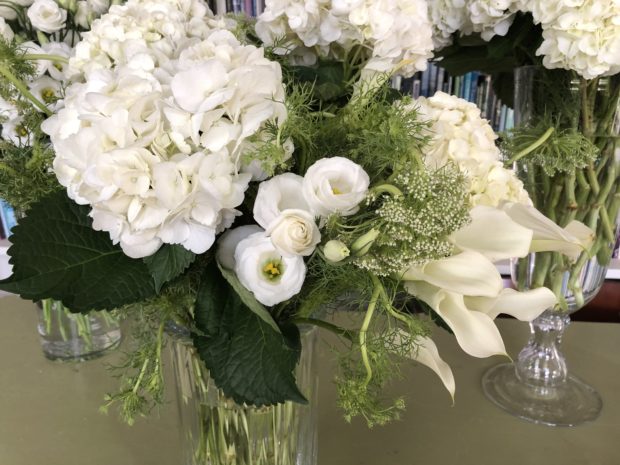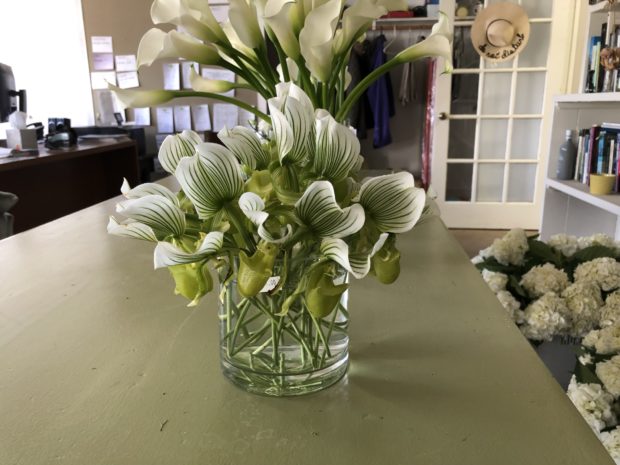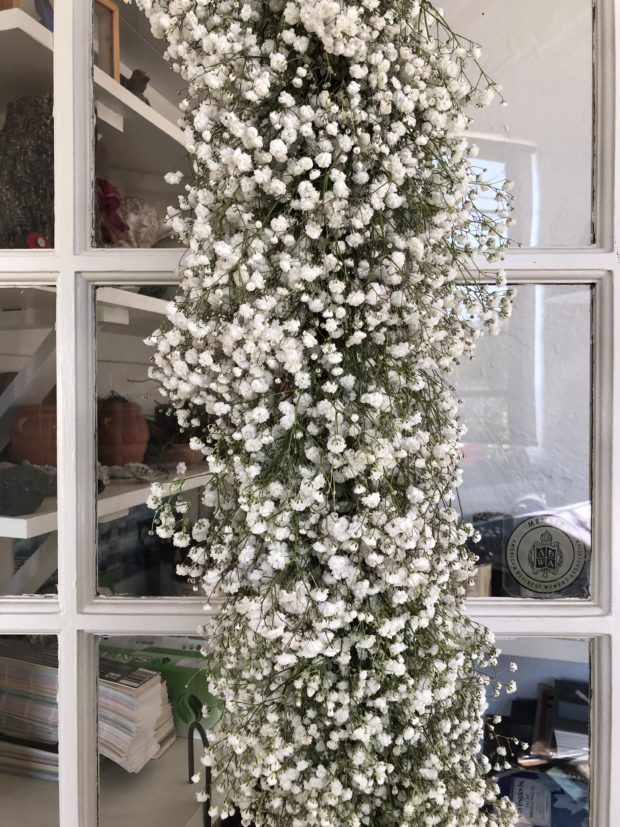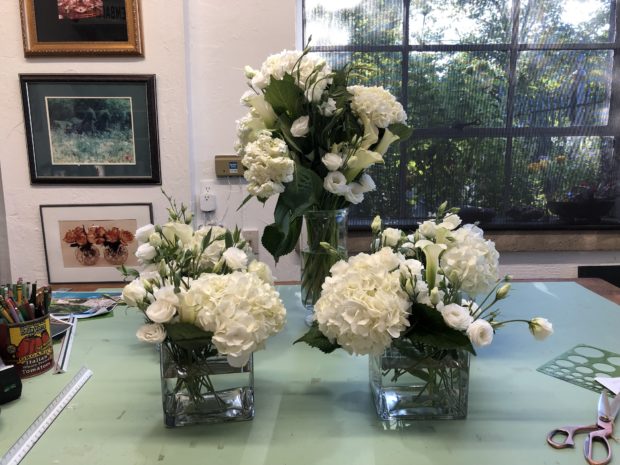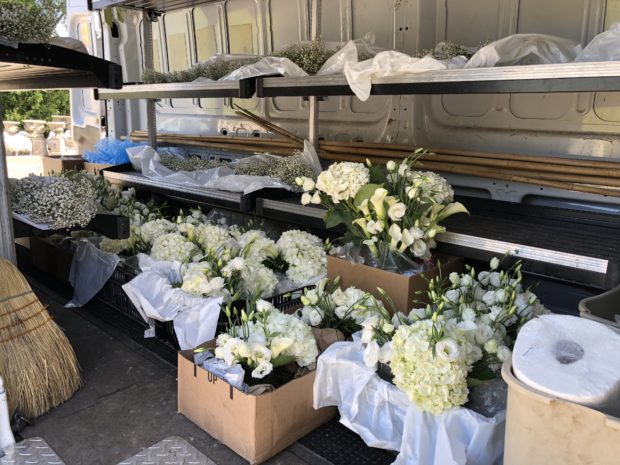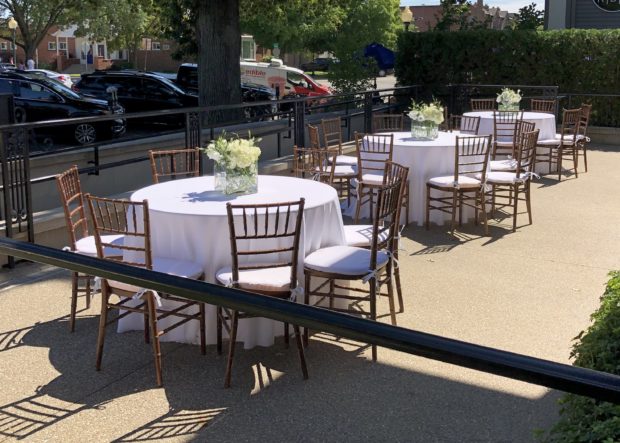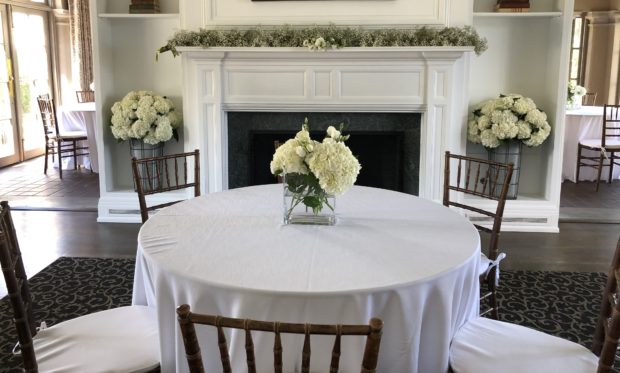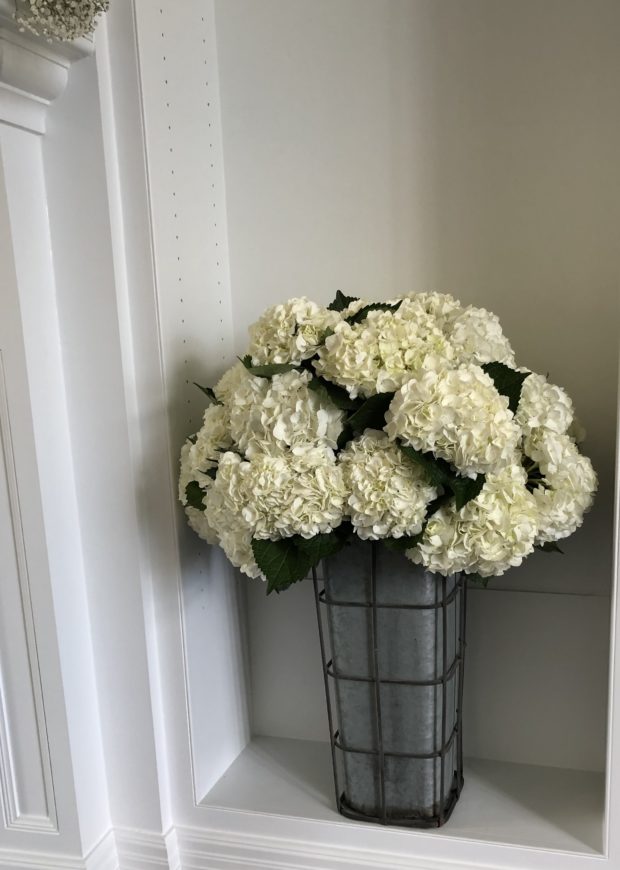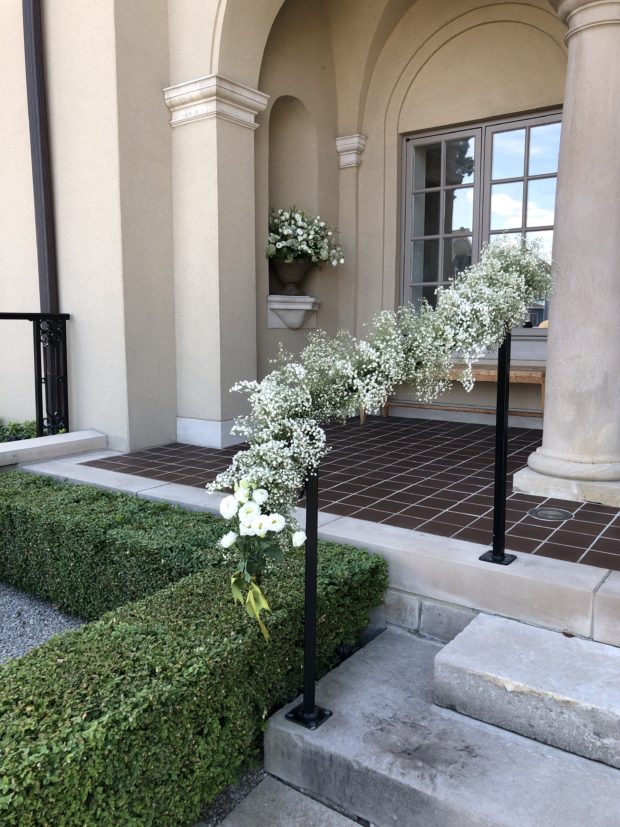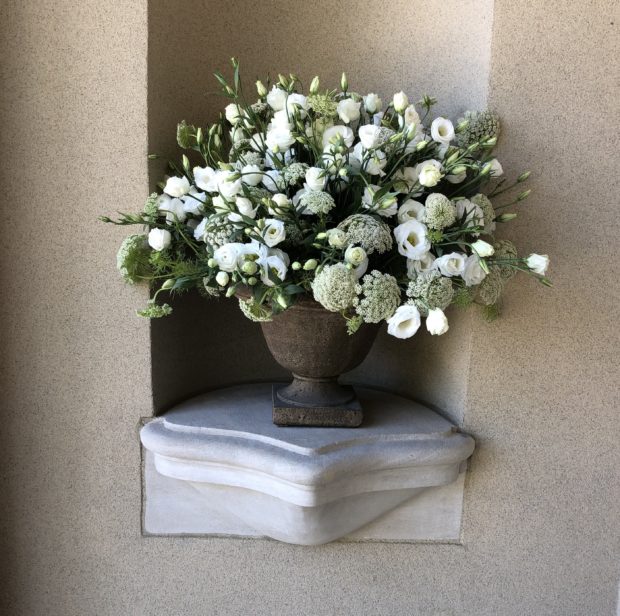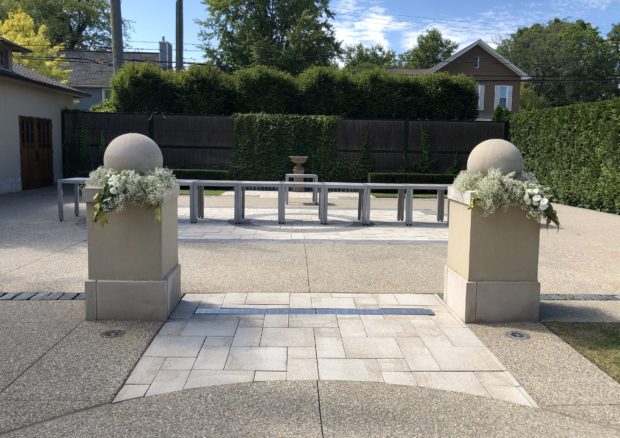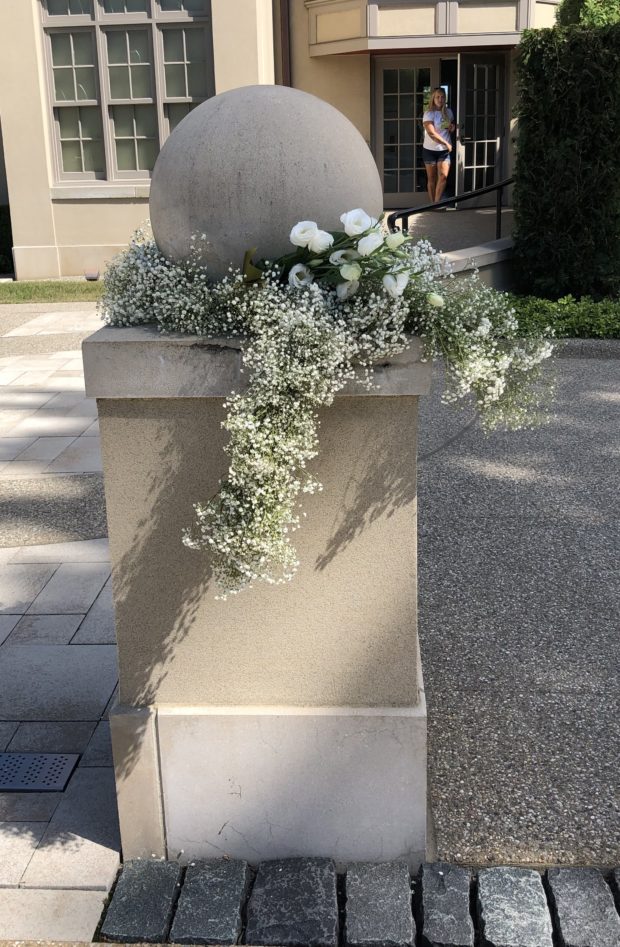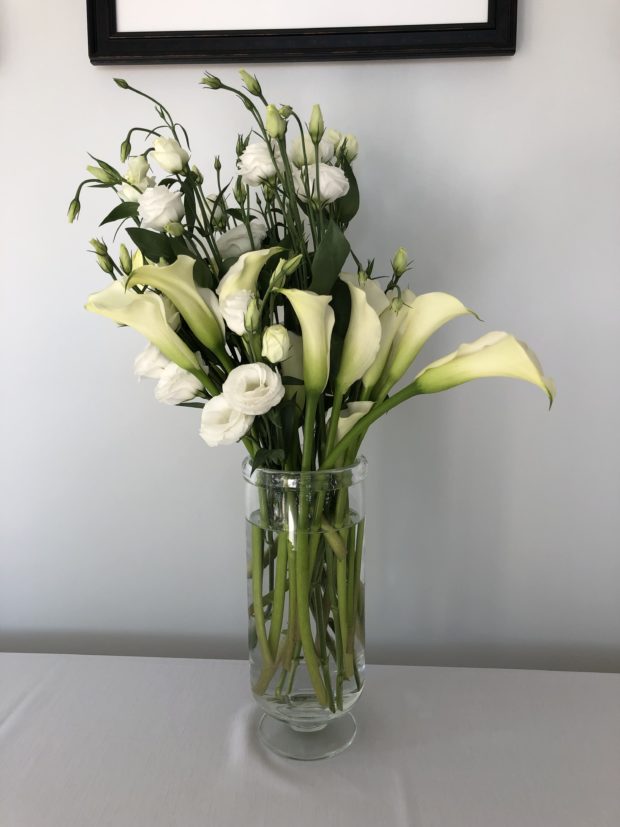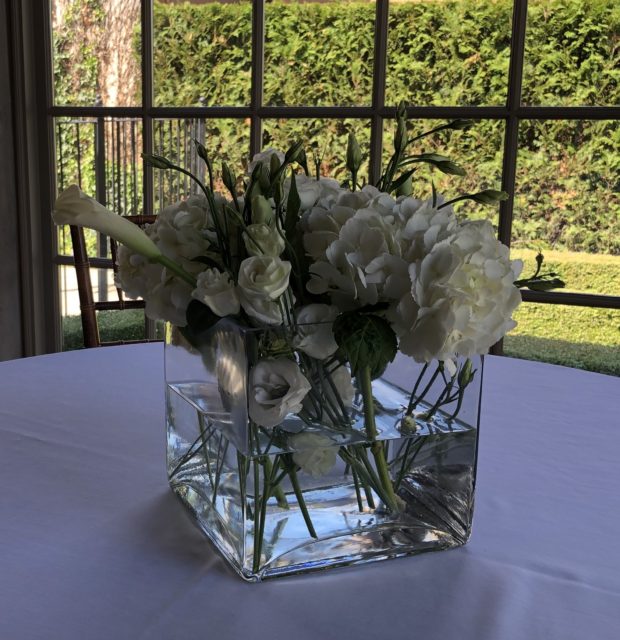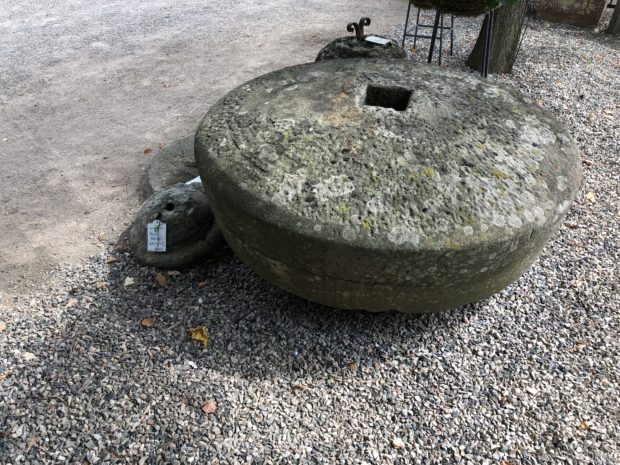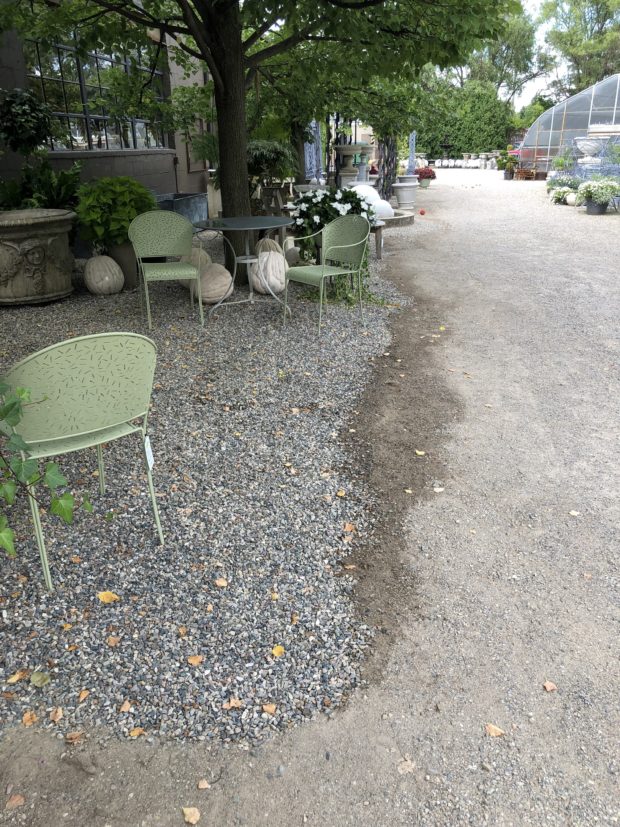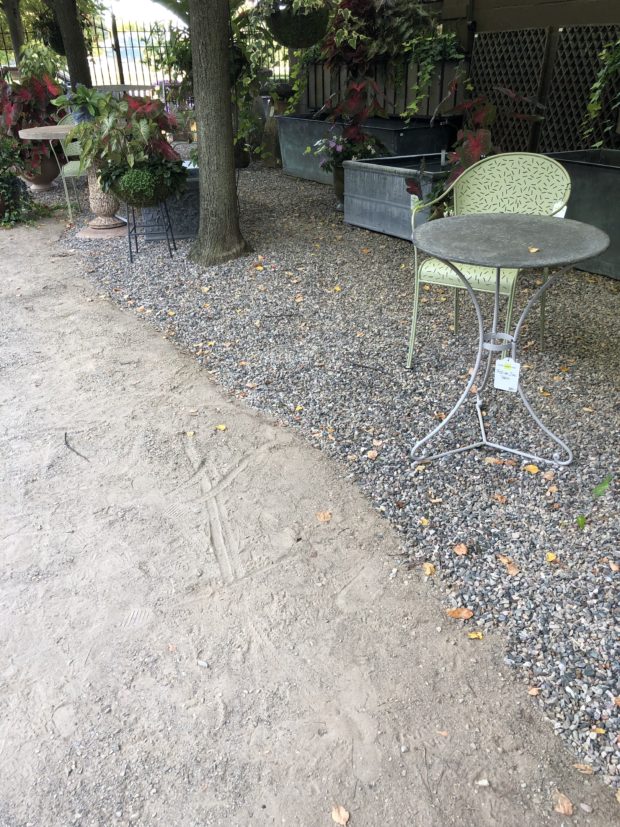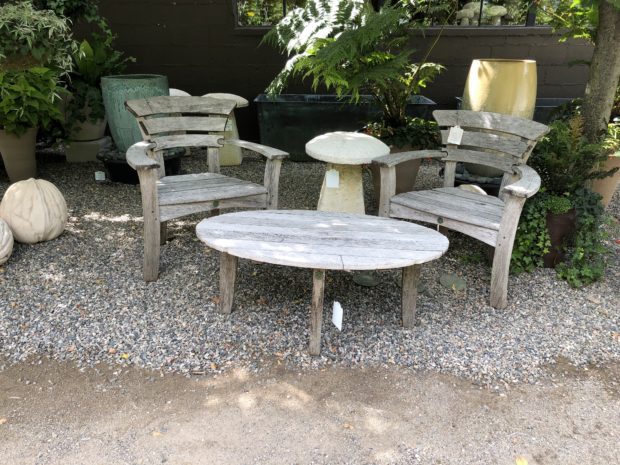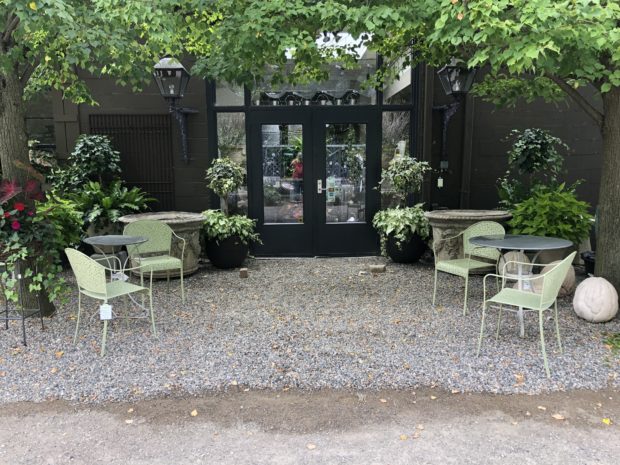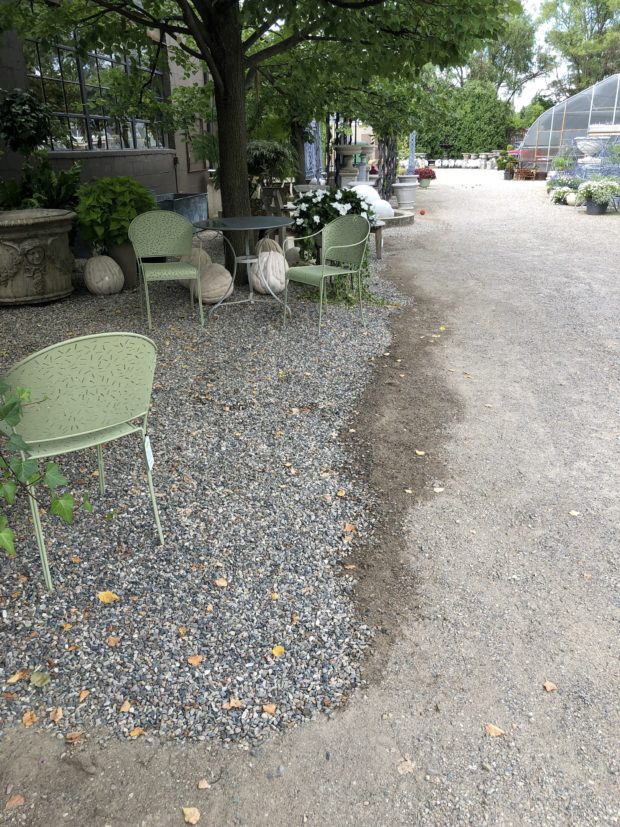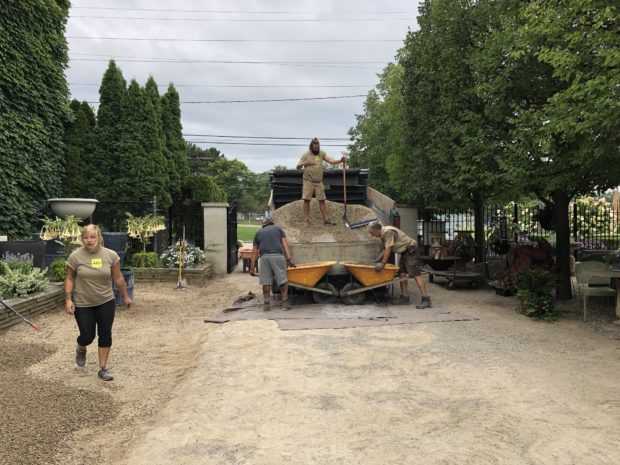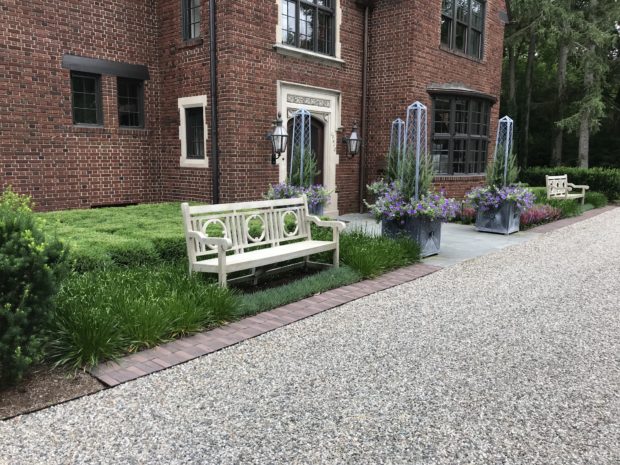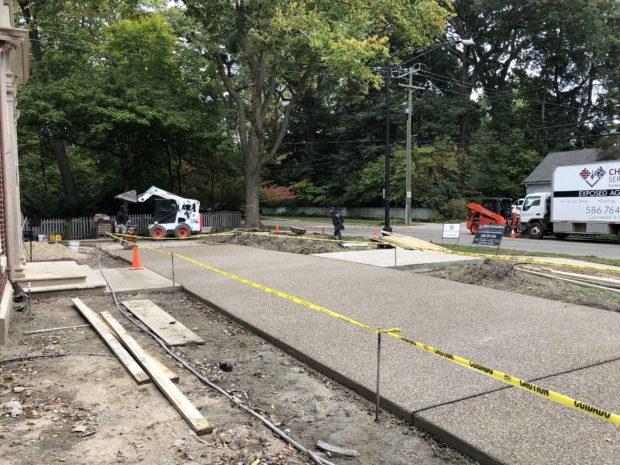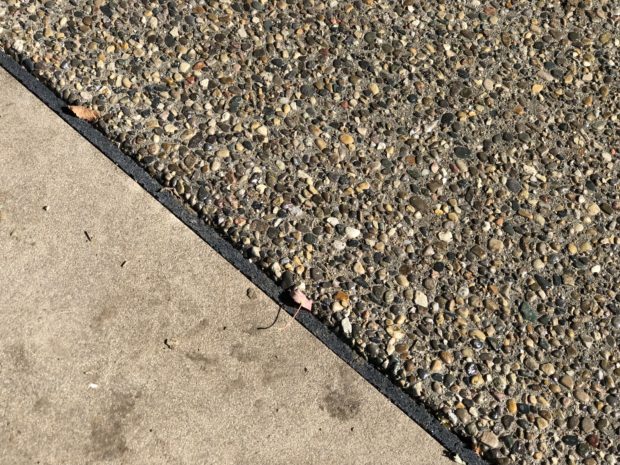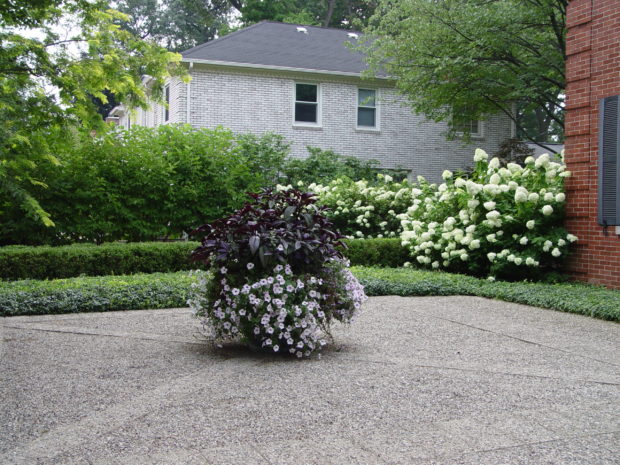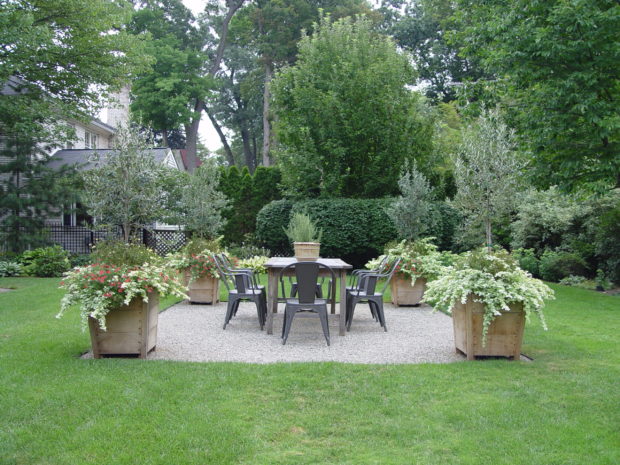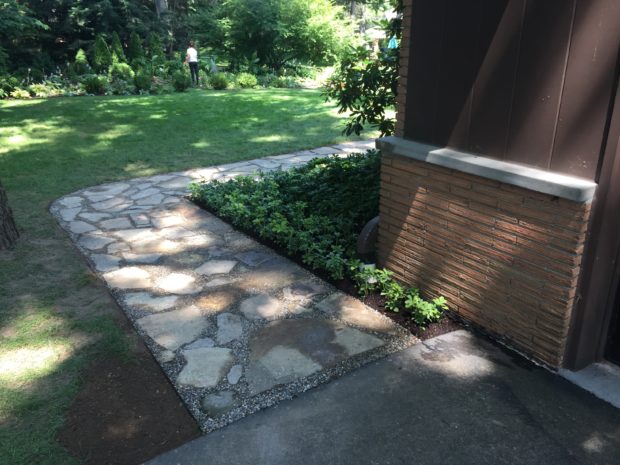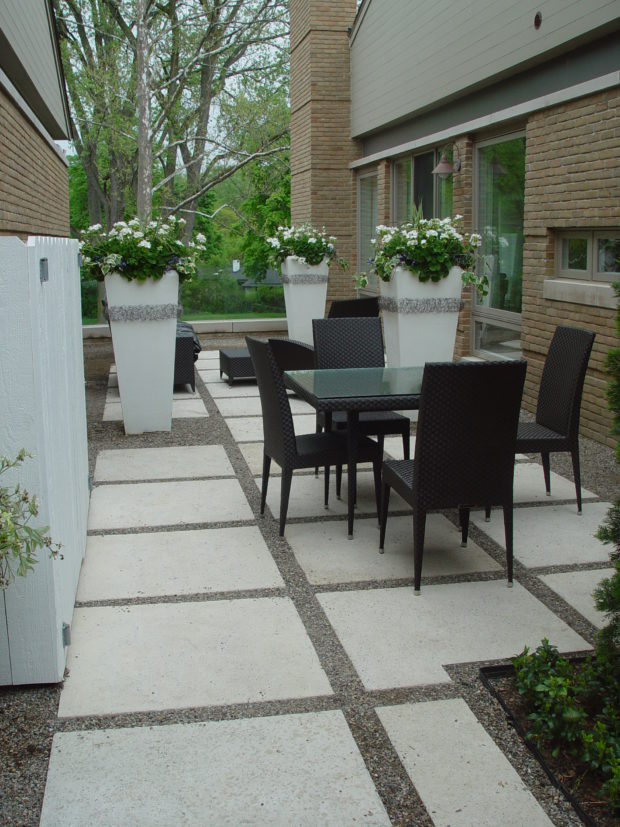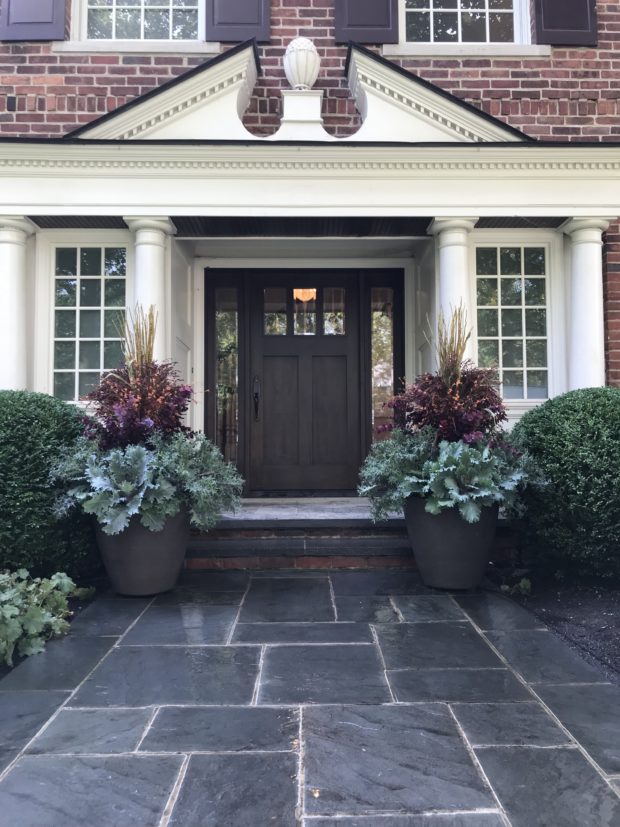 We have but a few fall container projects yet to plant. It takes about 6 weeks to do them all. We have landscape projects that are on going, but planting up containers is a part of our service that we take seriously. The conversation generated with clients over containers is an important one. If I have been involved in providing a garden or landscape project, there is that moment when that project ceases to be mine, and they take ownership. I prepare clients for ownership as best I can. I specify plants that are proper for the conditions in which they are planted. I provide the terrace they requested with the shade of a tree, a pergola, or an umbrella. A discreet spot for the trash cans and bikes will earn a thank you. An irrigation system can make the maintenance of a planting easier. How new plants get watered is a critical requirement for new landscapes, so I spend more than the requisite amount of time to address that. Correcting drainage problems directly influences the longevity of all of the plants-both big and small. We install drainage, and we take great pains to address why it is such an important part of plant health. There are clients for whom I plant large gardens. I know that they know what will be required of them to maintain them. Other clients are relieved when I suggest that a well structured landscape of trees and shrubs will be enough. I do not have enough time left in my life to pass on my knowledge and experience with plants, but I certainly can pass along what I know about the specific plants I have planted.
We have but a few fall container projects yet to plant. It takes about 6 weeks to do them all. We have landscape projects that are on going, but planting up containers is a part of our service that we take seriously. The conversation generated with clients over containers is an important one. If I have been involved in providing a garden or landscape project, there is that moment when that project ceases to be mine, and they take ownership. I prepare clients for ownership as best I can. I specify plants that are proper for the conditions in which they are planted. I provide the terrace they requested with the shade of a tree, a pergola, or an umbrella. A discreet spot for the trash cans and bikes will earn a thank you. An irrigation system can make the maintenance of a planting easier. How new plants get watered is a critical requirement for new landscapes, so I spend more than the requisite amount of time to address that. Correcting drainage problems directly influences the longevity of all of the plants-both big and small. We install drainage, and we take great pains to address why it is such an important part of plant health. There are clients for whom I plant large gardens. I know that they know what will be required of them to maintain them. Other clients are relieved when I suggest that a well structured landscape of trees and shrubs will be enough. I do not have enough time left in my life to pass on my knowledge and experience with plants, but I certainly can pass along what I know about the specific plants I have planted.
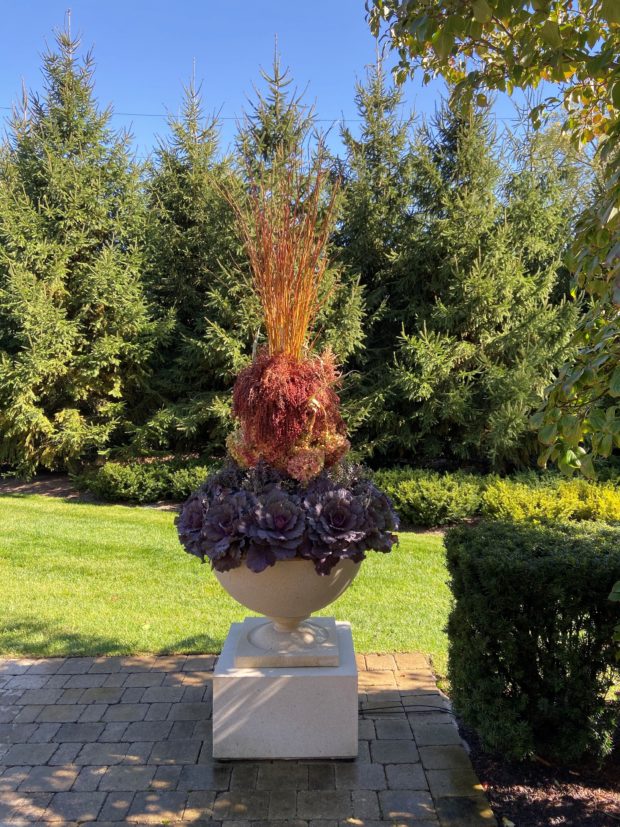 Inspiring confidence in a client is one way of speaking to ownership. But I am not particularly a fan of pep talks. They are exhausting to give, and can be too much information all at once to absorb. It can be unsatisfying for all parties. Providing for success is a long term effort that goes beyond a design that is good and solid. Clients know the work we have done comes with a responsibility on their part. But there is another step beyond offering the counsel and information they need to nurture a landscape. Beyond ownership is a state of engagement with the natural world.
Inspiring confidence in a client is one way of speaking to ownership. But I am not particularly a fan of pep talks. They are exhausting to give, and can be too much information all at once to absorb. It can be unsatisfying for all parties. Providing for success is a long term effort that goes beyond a design that is good and solid. Clients know the work we have done comes with a responsibility on their part. But there is another step beyond offering the counsel and information they need to nurture a landscape. Beyond ownership is a state of engagement with the natural world.
 Very few of my projects do not specify and include containers. I have a reason for that. They are a bridge over which a client and I can meet, and forge a relationship over the beauty of plants. Containers stuffed with robustly flowering summer annuals, tropical plants, green plants of interesting shape and texture or favorite perennials at the front door or on a rear terrace stand out in the landscape. Container plantings are personal, in that they express the taste in color and style of the owner. They make a statement about what constitutes beauty. A beautifully planned and executed container is easy to fall for. A client who is able to be successful growing plants in containers becomes engaged in the process of making something grow.
Very few of my projects do not specify and include containers. I have a reason for that. They are a bridge over which a client and I can meet, and forge a relationship over the beauty of plants. Containers stuffed with robustly flowering summer annuals, tropical plants, green plants of interesting shape and texture or favorite perennials at the front door or on a rear terrace stand out in the landscape. Container plantings are personal, in that they express the taste in color and style of the owner. They make a statement about what constitutes beauty. A beautifully planned and executed container is easy to fall for. A client who is able to be successful growing plants in containers becomes engaged in the process of making something grow.
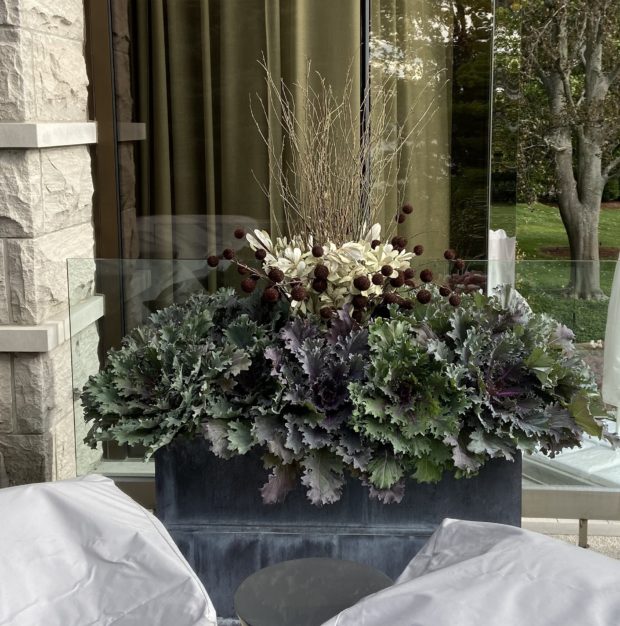 A discussion of the value of the landscape and garden is, at the end of the day, a discussion. Anyone who comes to take that that value to heart over the process of making something grow in a contained area is more likely to evolve from an interested observer to a committed participant. I have seen this happen over and over again. In the course of planting containers on the roof deck of a local restaurant, I was approached about selecting and planting containers by an owner of a similar business nearby. Though it took some time to persuade them that the investment would be a good one, they took the plunge. Many years later, we are still planting their containers at their business. Their customers are vocal in their interest and appreciation. The care they take with the outside speaks to what one can expect to find on the inside. Later we went on to supply and plant containers at their home for every season.The landscapes in both places have evolved and grown. All of the plantings are beautifully maintained, as they have gone beyond ownership to stewardship.
A discussion of the value of the landscape and garden is, at the end of the day, a discussion. Anyone who comes to take that that value to heart over the process of making something grow in a contained area is more likely to evolve from an interested observer to a committed participant. I have seen this happen over and over again. In the course of planting containers on the roof deck of a local restaurant, I was approached about selecting and planting containers by an owner of a similar business nearby. Though it took some time to persuade them that the investment would be a good one, they took the plunge. Many years later, we are still planting their containers at their business. Their customers are vocal in their interest and appreciation. The care they take with the outside speaks to what one can expect to find on the inside. Later we went on to supply and plant containers at their home for every season.The landscapes in both places have evolved and grown. All of the plantings are beautifully maintained, as they have gone beyond ownership to stewardship.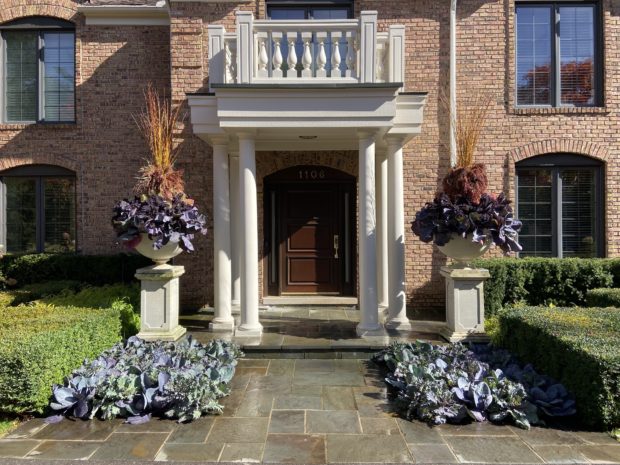 A primarily green landscape in October pictured above just a welcome dose of fall color and cold tolerant seasonal plants. This client called and talked about the beauty of her pots and annual plantings over the summer, and how much pleasure she got from them. They grew prolifically. Her friends and family talked about them all season long. We planted plants we felt would succeed, and provided her the bright color she likes. They were designed and planted specifically for her. Our conversation about summer containers was the prelude to a discussion of planting for fall. This client had a sincere interest in the landscape from the start, but the conversation has changed. The pots and the landscape have value.
A primarily green landscape in October pictured above just a welcome dose of fall color and cold tolerant seasonal plants. This client called and talked about the beauty of her pots and annual plantings over the summer, and how much pleasure she got from them. They grew prolifically. Her friends and family talked about them all season long. We planted plants we felt would succeed, and provided her the bright color she likes. They were designed and planted specifically for her. Our conversation about summer containers was the prelude to a discussion of planting for fall. This client had a sincere interest in the landscape from the start, but the conversation has changed. The pots and the landscape have value.
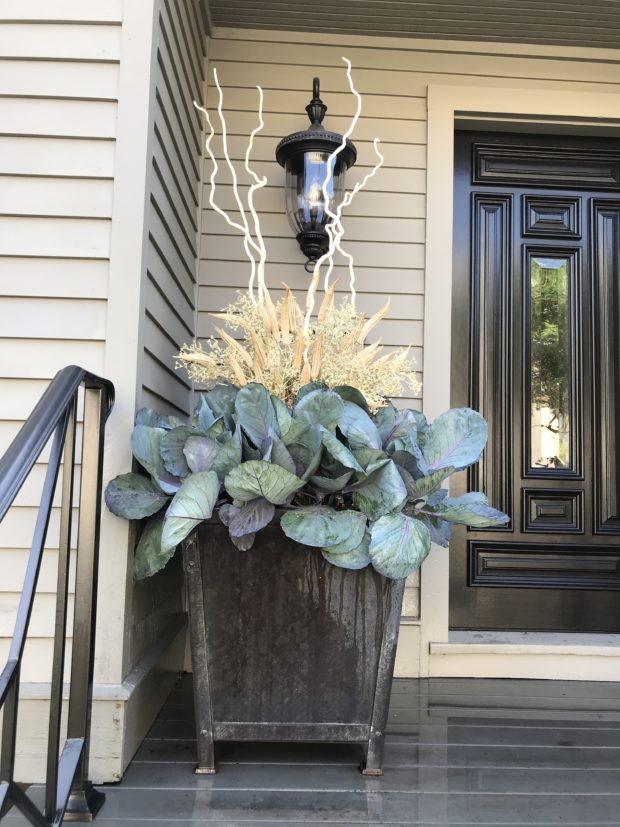 This client has one pot on her front porch. It plays an integral part in the appearance of her home from the street. Though the landscape is slowing down and will eventually go dormant, this pot planted for fall and later for winter is an expression of the garden year that will persist. Her interest in the planting of that pot is a symbol of an interest in the greater landscape.
This client has one pot on her front porch. It plays an integral part in the appearance of her home from the street. Though the landscape is slowing down and will eventually go dormant, this pot planted for fall and later for winter is an expression of the garden year that will persist. Her interest in the planting of that pot is a symbol of an interest in the greater landscape.
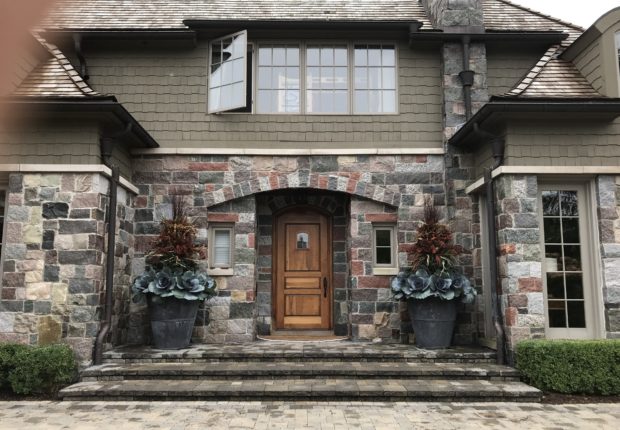 A lush fall planting is a way to celebrate the harvest that comes at the end of the season. It anticipates all of the fall color soon to come from the trees, shrubs and perennials in the ground. Those who design and garden for themselves always seem to have some pots under cultivation. I like the fact that I can look at the container work of others, as I am able to get a glimpse of how they see the natural world. I am embarrassed to say I almost never plant pots for fall. That is 100% due to the fact that my crews rarely have time to plant them for me, given the work on deck to bring the landscape season to a close, and the winter and holiday season just a few weeks away. It is one thing to choose material, and design. It is quite another to make that happen. To follow are more pictures of our recent work.
A lush fall planting is a way to celebrate the harvest that comes at the end of the season. It anticipates all of the fall color soon to come from the trees, shrubs and perennials in the ground. Those who design and garden for themselves always seem to have some pots under cultivation. I like the fact that I can look at the container work of others, as I am able to get a glimpse of how they see the natural world. I am embarrassed to say I almost never plant pots for fall. That is 100% due to the fact that my crews rarely have time to plant them for me, given the work on deck to bring the landscape season to a close, and the winter and holiday season just a few weeks away. It is one thing to choose material, and design. It is quite another to make that happen. To follow are more pictures of our recent work.
